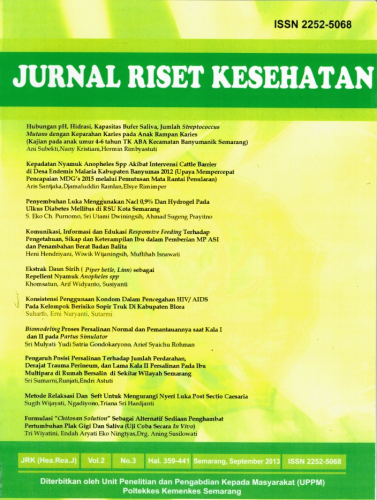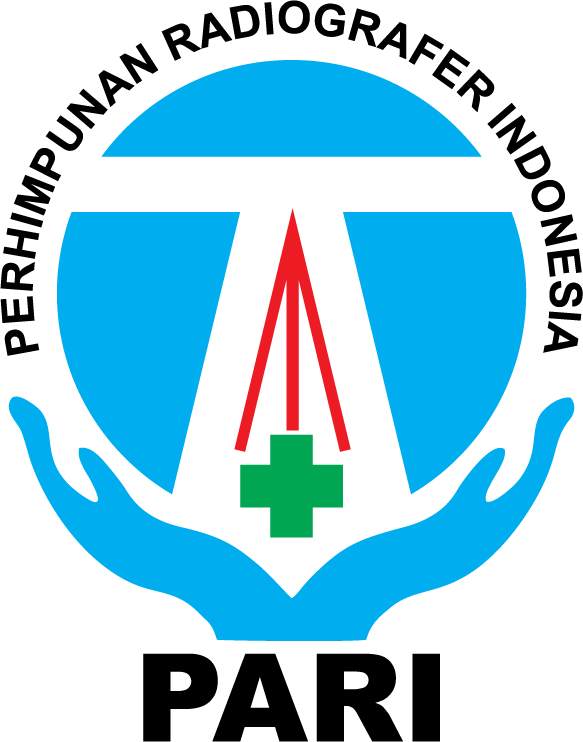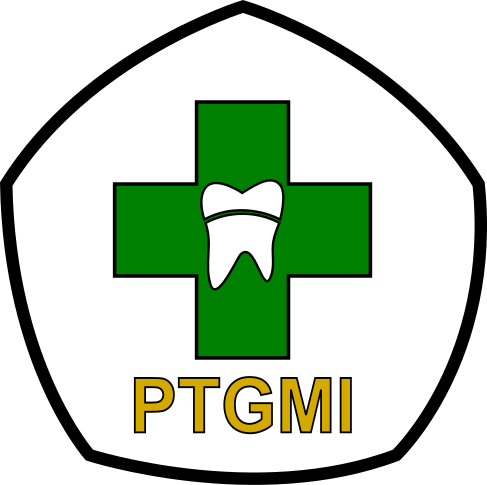Medication Error Prevention Using Healthcare Failure Mode And Effect Analysis At Clinical Pharmacy Installation
Abstract
Medication error is the second most common patient safety incident worldwide. Medication errors can be defined as unintentional failures in medication services that have the potential to cause harm to patients. Maintaining safe health services is highly dependent on the ability of service providers to proactively conduct patient safety risk analysis, one of which is using the Healthcare Failure Mode and Effect Analysis (HFMEA) method. This study was aimed at obtaining the HFMEA design as an effort to prevent medication errors at Company X Clinical Pharmacy Installation. The research method used is qualitative research with a specific type of Operations Research. Data collected by in-depth interviews, observation, secondary data analysis, and focus group discussion. The results of this study found factors that cause medication errors to occur from organizational factors and staff factors. These results then analyzed for the HFMEA design which obtained 11 risks that required attention and then 14 action plans are made to overcome them. This study successfully developed HFMEA design to prevent medication error in Company X Clinical Pharmacy Installation.
Keywords
Full Text:
PDFReferences
Alawiyah, T. E. (2022). Penerapan Failure Mode and Effect Analysis (FMEA) untuk Mendeteksi Prescreption Error pada Depo Farmasi Rawat Jalan Instalasi Farmasi RSUD Praya. Jurnal Kesehatan Qamarul Huda, 10(2), 217–223. https://doi.org/10.37824/jkqh.v10i2.2022.403
American Society of Health System Pharmacists. (2003). Medication Safety-Guidelines ASHP Guidelines on Preventing Medication Errors in Hospitals Purpose. Retrieved from www.ashp.org/Pharmacy-Practice/Policy-
Anjalee, J. A. L., Rutter, V., & Samaranayakee, N. R. (2021). Application of failure mode and effects analysis (FMEA) to improve medication safety in the dispensing process – a study at a teaching hospital, Sri Lanka. BMC Public Health, 21(1430), 168–174.
Arundina, A., & Widyaningrum, K. (2020). Numbers and Potential Causes of Medication Error in Inpatient Service of Rumah Sakit Islam Malang. Jurnal Kedokteran Brawijaya, 31(2), 127–130. https://doi.org/10.21776/ub.jkb.2020.031.02.11
Aurelia, A. (2021). Desain Failure Mode Effect Analysis (FMEA) Sebagai Upaya Pencegahan Medication Error Pada Pelayanan Instalasi Farmasi (Unit Rawat Jalan) Di RSUD Tebet Tahun 2021. Universitas Indonesia, Depok.
Avery, A., Barber, N., Ghaleb, M., Franklin, B., Armstrong, S., & Crowe, S. (2012). Investigating the Prevalence and Causes of Prescribing Errors in General Practice: The Practice Study. General Medical Council.
Brigitta, I. R., & Dhamanti, I. (2020). Literature Review: Cause Factor Analysis and an Effort to prevent Medication Administration Error (MAE) at Hospital. Unnes Journal of Public Health, 9(2), 98–107. https://doi.org/10.15294/ujph.v9i2.36470
Budihardjo, V. S. (2017). Faktor Perawat terhadap Kejadian Medication Administration Error di Instalasi Rawat Inap. Jurnal Administrasi Kesehatan Indonesia, 5(1).
Chanamool, N., & Naenna, T. (2016). Fuzzy FMEA Application to Improve Decision-making Process in an Emergency Deaprtment. Appl Soft Comput, 43, 441–453.
Costa P. C. (2020). Failure Mode and Effect Analysis in the Preparation and Dispension of Chemotherapy. Enfermieria Global, 19(2), 96–108.
Derosier, J., Stalhandske, E., Bagian, J. P., & Nudell, T. (2002). Using Health Care Failure Mode and Effect AnalysisTM: The VA National Center for Patient Safety’s Prospective Risk Analysis System.
Donaldson, L., Ricciardi, W., Sheridan, S., & Tartaglia, R. (2021). Textbook of Patient Safety and Clinical Risk Management. Switzerland: The Springer.
Gandhi, T., Weingart, S., Borus, J., Seger, A., Peterson, J., & Burdick, E. (2003). Adverse Drug Events in Ambulatory Care. N Engl J Med, 348, 1556–1564.
Hartati, Lolok, N. H., Fudholi, A., & Satibi. (2014). ANALISIS KEJADIAN MEDICATION ERROR PADA PASIEN ICU ANALYSIS OF INCIDENCE MEDICATION ERROR IN ICU PATIENTS. Jurnal Manajemen Dan Pelayanan Farmasi, 4(2), 125–132.
Herdiana, D. (2018). Sosialisasi Kebijakan Publik: Pengertian dan Konsep Dasar. Jurnal Ilmiah Wawasan Insan Akademik, 1(3).
Jain, K. (2017). Use of failure mode effect analysis (FMEA) to improve medication management process. International Journal of Health Care Quality Assurance, 30(2).
Kementerian Kesehatan RI. (2021). Peraturan Menteri Kesehatan RI Nomor 34 Tahun 2021 tentang Standar Pelayanan Kefarmasian di Klinik. Jakarta: Kementerian Kesehatan RI.
Khani-Jazani, R., Molavi-Taleghani, Y., Seyedin, H., Vafaee-Najar, A., Ebrahimipour, H., & Pourtaleb, A. (2015). Risk Assessment of Drug Management Process in Women Surgery Department of Qaem Educational Hospital (QEH) Using HFMEA Method (2013). Iranian Journal of Pharmaceutical Research, 14(2), 495–504.
Komite Nasional Keselamatan Pasien. (2020). Sistem Pelaporan dan Pembelajaran Keselamatan Pasien Nasional (SP2KPN). Retrieved March 23, 2023, from https://persi.or.id/wp-content/uploads/2020/11/event5-04.pdf
Namaghi, M. T., Jahangiri, K., Riahi, L., & Gharebagh, M. J. (2019). Clinical Risk Assessing and Management in Medication Process of CCU by HFMEA. Nursing and Midwifery Journal, 17(7), 546–562.
Permatasari, I. G. A. A. B. (2020). Evaluasi: Menyusun soal Post-Test, Membagikan Link Post-Test, dan Menutup Kegiatan KMbD. Retrieved June 7, 2023, from https://kkn.undiksha.ac.id/blog/evaluasi-menyusun-soal-post-test-membagikan-link-post-test-dan-menutup-kegiatan-kmbd#:~:text=Mengetahui%20perbedaan%20hasi%20belajar%20siswa,dilakukan%20setelah%20siswa%20mengikuti%20pembelajaran.
Purwaningsih, D. F., Maria, D., Suratmi, Raharyani, A., Rahayu, C., Asrianto, … Widyarani, D. (2022). MANAJEMEN PATIENT SAFETY DALAM KEPERAWATAN. Yogyakarta: CV Rizmedia Pustaka Indonesia.
Salsabila, Z., Masyitoh, M., Sjaaf, A. C., & Partakusuma, L. G. (2021). HEALTHCARE FAILURE MODE AND EFFECT ANALYSIS DESIGN FOR INDONESIA HOSPITAL LABORATORIES: A LITERATURE REVIEW. Jurnal Administrasi Kesehatan Indonesia, 9(1), 33. https://doi.org/10.20473/jaki.v9i1.2021.33-54
Ulfa, A. M., & Chalidyanto, D. (2021). Evaluation of the Drug Logistics Management Process at the UPTD Sampang District Public Health Center. Media Gizi Kesmas, 10(2).
VHA National Center for Patient Safety (NCPS). (2021). Healthcare Failure Modes and Affects Analysis (HFMEA) Guidebook. Retrieved February 13, 2023, from https://www.patientsafety.va.gov/professionals/onthejob/hfmea.asp
World Health Organization. (2009). Conceptual Framework for the International Classification for Patient Safety. Retrieved from http://www.who.int/patientsafety/taxonomy/ICPS_Statement_of_Purpose.pdf
World Health Organization. (2016). Medication errors. Geneva: World Health Organization.
World Health Organization. (2017). Medication Without Harm. Geneva. Retrieved from http://apps.who.int/bookorders.
World Health Organization. (2019). Patient Safety. Retrieved February 13, 2023, from https://www.who.int/news-room/fact-sheets/detail/patient-safety
World Health Organization. (2021). Global Patient Safety Action Plan 2021-2030: towards eliminating avoidable harm in health care. Geneva.
Zavaleta-Bustos, Miriam, Castro-Pastrana, L. I., Reyes-Hernandez, I., Lopez-Luna, A., & Bermudez-Camps, I. B. (2008). Prescription Errors in a Primary Care University Unit: Urgency of Pharmaceutical Care in Mexico. . Revista Brasileira De Ciencias Farmaceuticas, 44, 115–125.
DOI: https://doi.org/10.31983/jrk.v13i1.10186
Article Metrics
Refbacks
- There are currently no refbacks.
Copyright (c) 2024 Jurnal Riset Kesehatan




















































